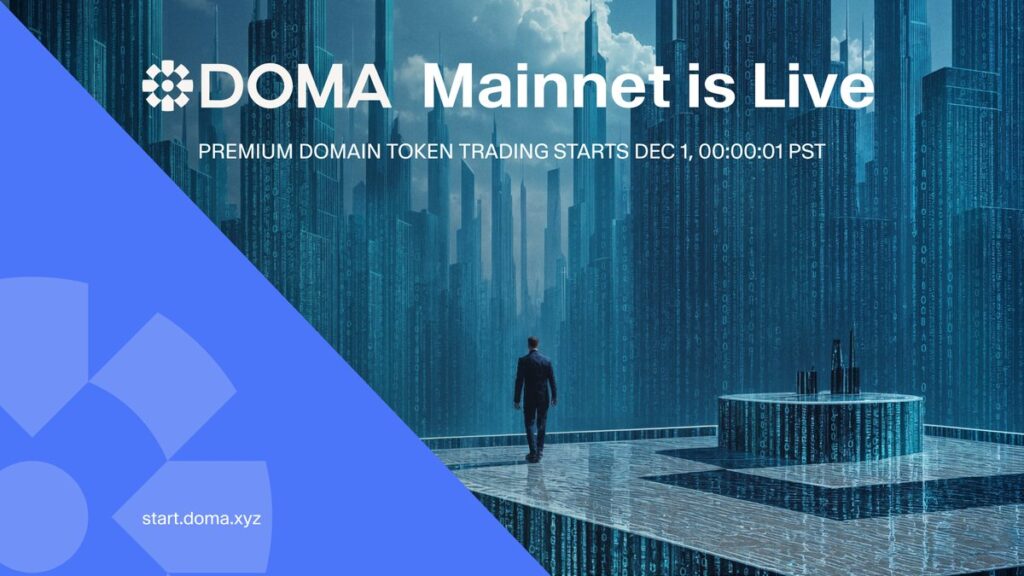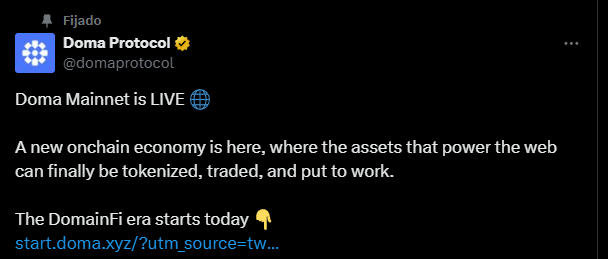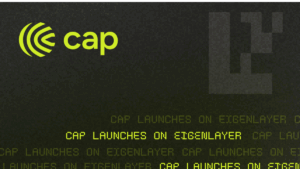TL;DR
- Doma Protocol launched a mainnet that turns real domains into programmable and liquid DeFi assets, opening a new operational and financial pathway.
- The system targets a market worth over $360B that still runs on slow and costly processes, and proposes an infrastructure with instant transfers and 24/7 liquidity.
- The network uses a Layer 2 architecture compliant with ICANN and registrars, tokenizes domains as ERC-20 assets, and enables fractional ownership and use as collateral.
Doma Protocol launched its mainnet and proposes something the market has never solved: converting traditional internet domains into programmable, liquid financial assets within the DeFi ecosystem.
The initiative targets a massive sector valued at over $360B, which has grown for decades without modern trading infrastructure, instant settlement, or integration with open markets. Today, domain buying and selling remains stuck in manual and slow procedures, dominated by brokers charging 10% to 20% fees, settlement times that can stretch over weeks, and closing processes that may take 6 to 18 months for top-tier domains. Doma aims to break that pattern.
Doma Builds on an Interoperable Foundation
The new network operates as a Layer 2 on OP Stack with LayerZero interoperability and integrates Base, Solana, Avalanche, and ENS from day one. This architecture enables tokenization of real .com, .ai, and other domains as ERC-20 assets tradable on open markets, with fractionalization, instant transfers, collateralization, and 24/7 liquidity.
A key piece is that it does not invent an alternative to DNS: it maintains full compliance with ICANN and works with registrars representing more than 30 million domains. Doma is not building an experimental namespace but a financial infrastructure for an asset that is already regulated and operational.
Ending Domain Centralization
The system introduces two complementary tokens. Domain Ownership Tokens (DOTs) represent ownership and replace the sector’s standard manual transfer process. Domain Service Tokens (DSTs) separate operational aspects of the domain, such as DNS configuration or hosting management. This separation allows ownership and operation to exist on different layers without losing real-world utility like email or web resolution.
Test numbers show strong early demand. The testnet recorded more than 35 million transactions, 1.45 million addresses, and 200,000 tokenized domains, alongside a $1 million development program. The mainnet already has more than 2,700 active addresses and around $183,000 in total value locked, small figures compared to the market’s scale but meaningful for a sector that had virtually no real tokenization until now.
The challenge is clear: Doma must prove that domain holders will adopt this infrastructure as a viable exit or income channel, and that DeFi users will see domains as a digital RWA class that is productive and aligned with the liquidity, governance, and traceability requirements of the market.












